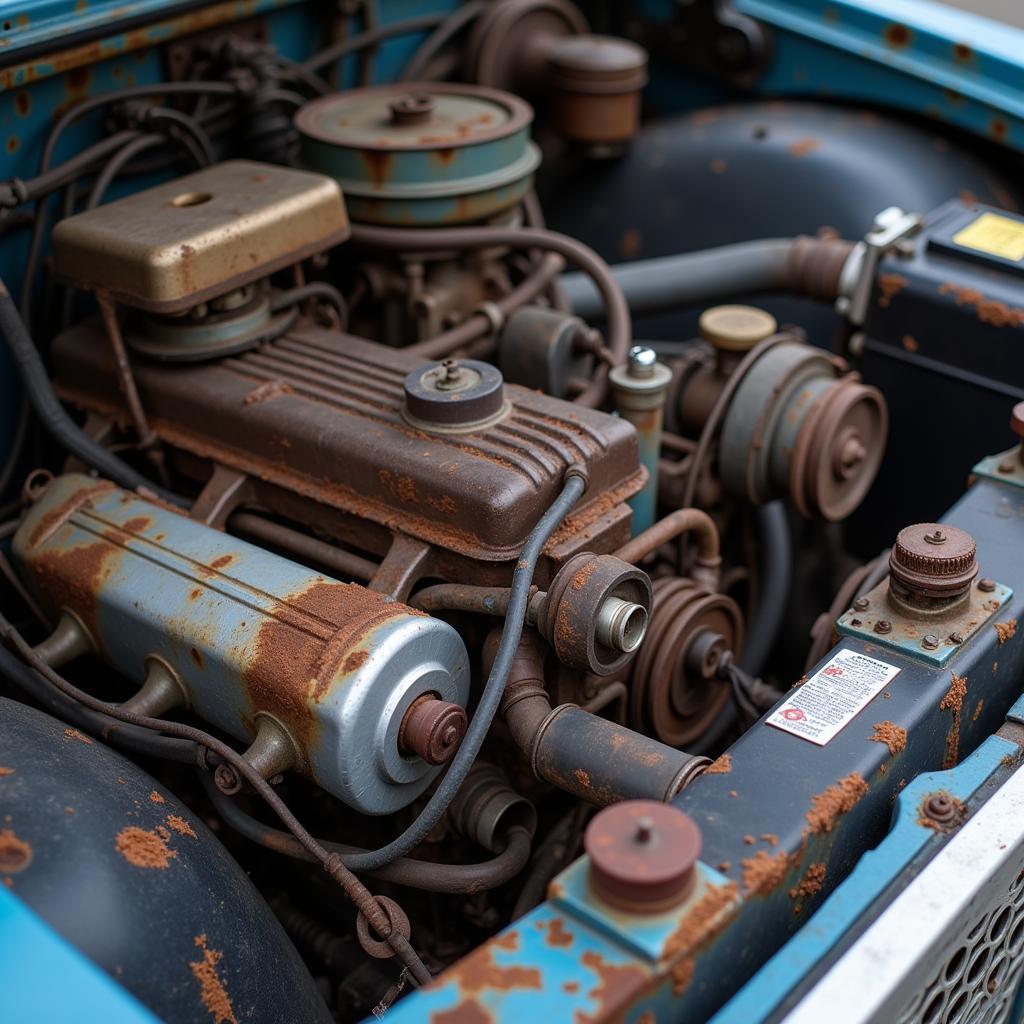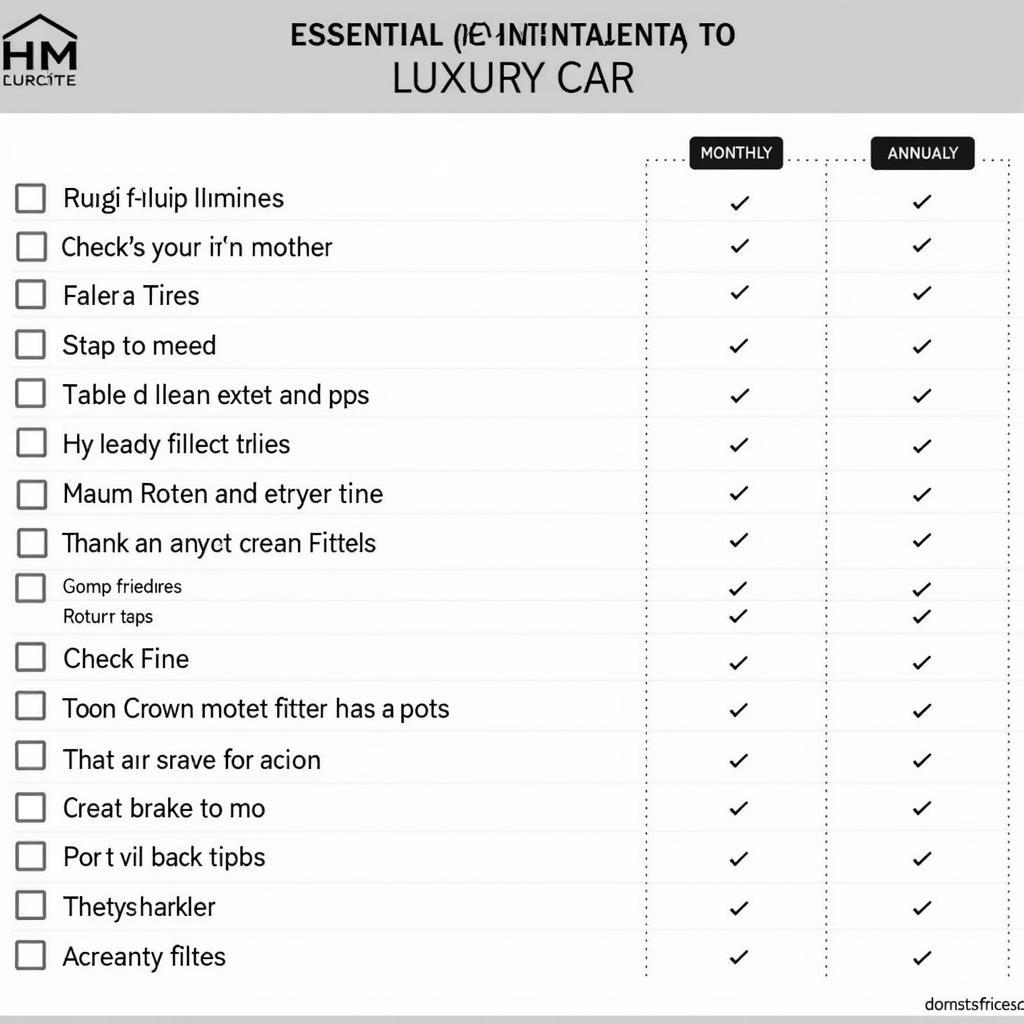Sandpaper scratches on your car can be a real eyesore, taking away from its shine and value. They happen when abrasive materials, like sandpaper or rough fabrics, rub against your car’s paint. But don’t fret! You can fix these scratches yourself and restore your car’s beautiful finish. This guide will walk you through the process, step-by-step, equipping you with the knowledge to get your car looking like new again.
Understanding Sandpaper Scratches
Sandpaper scratches are a type of paint defect that occurs when the clear coat or paint layers are abraded. The depth of the scratch determines the level of difficulty in fixing it.
“How to fix a rusty door on a car”, “fix scratched car mirror”
These scratches can be caused by several things, including:
- Using sandpaper on your car: This is the most common cause, especially when you’re trying to remove rust or other imperfections.
- Rough fabrics: Using rough cloths or materials while cleaning or waxing your car can cause scratches.
- Sand and debris: Small particles from the environment can get trapped under your wiper blades and scratch your windshield when you use them.
Assessing the Damage
Before you start fixing the scratch, you need to understand its depth. This will help you choose the right method to repair it.
- Shallow Scratches: These are scratches that only affect the clear coat. They are typically visible but don’t show the underlying paint.
- Deep Scratches: These are scratches that reach the base coat and may even expose the bare metal.
Tools and Materials You’ll Need
Here’s a list of tools and materials you’ll need to fix sandpaper scratches:
- Cleaning Supplies:
- Automotive cleaner
- Microfiber cloths
- Water
- Masking tape
- Sandpaper:
- 1500-grit sandpaper (for initial sanding)
- 2000-grit sandpaper (for fine sanding)
- Polishing Compound: Choose a compound suitable for your car’s paint.
- Polishing Pad: A foam polishing pad.
- Protective Gloves: For your hands.
- Optional Tools:
- Paint Scratch Remover Kit: If the scratch is deeper, this kit might be helpful.
- Touch-Up Paint: For filling in deep scratches before polishing.
- Electric Polisher: A rotary or orbital polisher can make the job easier.
How to Fix Sandpaper Scratches: A Step-by-Step Guide
Step 1: Prepare the Area
- Clean the Scratch: Wash the area around the scratch with automotive cleaner and a microfiber cloth. This will remove dirt and debris that could interfere with the repair process.
- Dry the Area: Dry the area thoroughly using a clean microfiber cloth.
- Tape Off the Surrounding Area: Use masking tape to protect the surrounding paint from accidental sanding.
Step 2: Sanding the Scratch
- Start with 1500-grit sandpaper: Wet the sandpaper with water and gently sand the scratch in a back-and-forth motion.
- Use even pressure: Apply consistent pressure and avoid sanding too hard, as this can damage the paint further.
- Sand until the scratch disappears: Continue sanding with 1500-grit sandpaper until the scratch is less noticeable.
- Finish with 2000-grit sandpaper: Wet the sandpaper with water and gently sand the area again. This will smooth out the surface and remove any sanding marks from the previous step.
Step 3: Polishing the Area
- Apply polishing compound: Use a small amount of compound and spread it evenly over the scratch.
- Polishing using a polishing pad: Use a foam polishing pad and apply light pressure while moving it in circular motions over the scratch.
- Continue polishing until the scratch disappears: Repeat steps 1 and 2 until the scratch is no longer visible.
- Remove the polishing compound: Use a clean microfiber cloth to wipe away the excess compound.
“Here’s my advice from years of experience as an auto technician. Don’t rush the polishing process, as this could leave swirl marks on your car’s paint. Take your time and be patient for the best results.” – John Smith, Certified Auto Technician
Dealing with Deeper Scratches
Deeper scratches that reach the base coat may require a different approach.
Step 1: Use a Paint Scratch Remover Kit
- Follow the manufacturer’s instructions: These kits often include a specialized compound and a polishing pad designed to remove deeper scratches.
Step 2: Apply Touch-Up Paint (If Needed)
- Choose the right paint: Obtain touch-up paint that matches the color of your car.
- Apply the paint: Apply the paint to the scratch using a small brush and let it dry completely.
- Sand and polish: Once the paint is dry, use 1500-grit and 2000-grit sandpaper to smooth out the area. Then, polish it using a polishing compound and pad.
FAQs
Q1: Can I use a paint scratch remover kit on any scratch?
- A: While these kits can be effective for deeper scratches, they’re not suitable for scratches that have exposed the bare metal. You might need professional help in such cases.
Q2: What if I don’t have a polishing pad?
- A: You can use a soft cloth, but the results may not be as smooth.
Q3: How often should I polish my car?
- A: Polishing your car a couple of times a year can help maintain its shine and protect the paint.
Q4: Can I prevent sandpaper scratches from happening?
- A: Yes, you can. Use a soft cloth or microfiber towel when cleaning or waxing your car. Be careful when using sandpaper on your car, and always protect the surrounding area with masking tape.
Q5: How can I know if the scratch is too deep for me to fix?
- A: If you can see the bare metal or if the scratch is very deep and you cannot remove it with sandpaper, then it’s best to seek professional help from a body shop.
Conclusion
Fixing sandpaper scratches on your car can be a simple and rewarding DIY project. Following these steps will help you restore your car’s shine and protect its finish. If you find yourself struggling with a particularly deep scratch, remember that professional help is always an option.
Contact us at +1 (641) 206-8880 or visit our office at 500 N St Mary’s St, San Antonio, TX 78205, United States for further assistance.






Leave a Reply